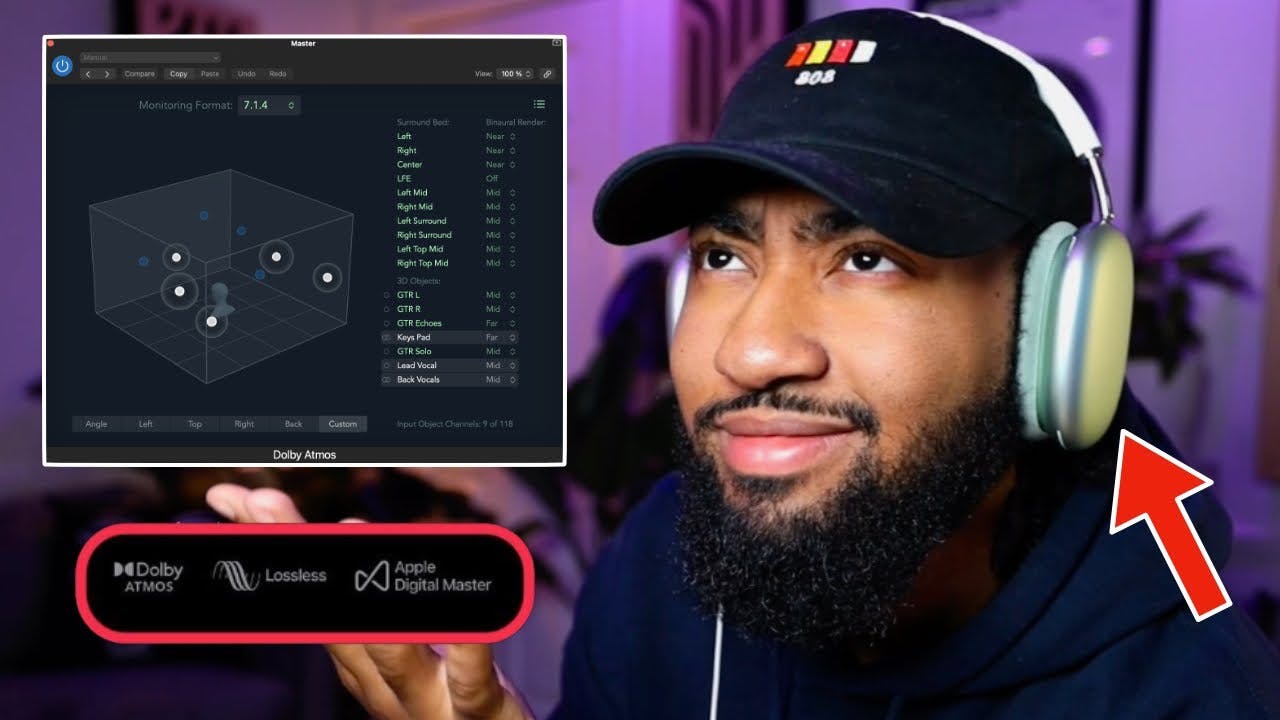Welcome to the world of Immersive Audio – 3D Sound, where sound takes on a whole new dimension. This guide explores 3D sound, a groundbreaking technology that’s redefining how we experience audio.
For creators, Immersive Audio offers an expansive canvas to craft dynamic soundscapes, breaking free from traditional stereo limitations. Whether you’re a musician, sound engineer, or content producer, this realm provides endless possibilities.
Listeners, too, are in for a treat. Imagine being surrounded by your favorite music, not just from the left and right, but above, below, and all around you. In this guide, we demystify Immersive Audio, its technology, and practical applications. Whether you seek to enhance your listening experiences or embark on a creative journey, join us in exploring the captivating world of Immersive Audio – 3D Sound.
What is immersive audio?
Immersive audio delivers a listening experience that extends beyond the traditional left-to-right stereo setup.
It creates a three-dimensional soundscape where audio sources can envelop the listener from all directions, whether it’s behind, above, or elsewhere.
In simpler terms, think of it as 3D audio that enhances your listening experience, making it more engaging, lifelike, and spatially immersive.
In some immersive audio setups, dynamic head-tracking technology is employed to sync the experience with the listener’s gaze and orientation, further intensifying the feeling of immersion.
From a technical perspective, immersive audio involves multichannel mixing, but it incorporates clever software components to position and decode sound objects’ locations. This approach goes beyond basic multichannel audio, which relies on a fixed number of channels defined by speaker configurations like 5.1 or 7.1.
Immersive technology has been available in various forms for some time, and it’s gaining significant interest, especially with Apple introducing it on its streaming platform and providing native support with AirPods Pro and MAX headphones.
Why use immersive audio?
If you’re a music producer accustomed to the traditional stereo setup, you might be questioning the sudden significance of immersive audio. It’s undeniable that major industry players are embracing it, but you may wonder if it will genuinely influence the music mixing process.
The key is to expand your viewpoint. Consider how groundbreaking it must have been to transition from mono to stereo recordings in the early 1960s.
Immersive experiences have the potential to unlock a similarly uncharted sonic realm for inquisitive producers to delve into.
Immersive experiences have the potential to introduce unexplored sonic frontiers for inquisitive producers to investigate.
The evolution of mixing techniques remains unpredictable as engineers continue to uncover novel and captivating methods to construct mixes within physical spaces.
The potential is exhilarating, and the actual encounter with immersive audio has the power to reshape one’s perspective.
In today’s media landscape, the emphasis is on presence. While virtual reality (VR) and augmented reality (AR) technologies primarily focus on the visual dimension, sound plays a significant role in providing your brain with contextual cues about its surroundings.
Immersive audio offers a uniquely compelling form of spatialization that can impart a sense of realism not easily achieved by other means.
Even conventional stereo mixes that have undergone conversion into immersive audio possess an enticing quality that imparts a sense of boundless space and depth to the mix.
What do you need for immersive audio?
Immersive audio presents a more intricate dimension compared to basic stereo sound.
Regardless of whether you’re a content creator eager to delve into immersive audio development or simply an enthusiastic listener keen to explore this experience, you’ll require a means to access it to begin your journey.
Here is an overview of how it operates.
Immersive audio for listeners
To enjoy immersive audio while listening to music, you’ll require the following:
- An application or audio source equipped to handle immersive audio.
- Either a pair of headphones or a speaker system that has immersive audio support.
As previously mentioned, if you’re within the Apple ecosystem, you’re in luck, as immersive audio is readily available through Apple Music and compatible with AirPods Pro and MAX headphones.
However, it’s worth noting that, currently, immersive audio can be experienced with any pair of headphones. The challenge arises when you desire to immerse yourself in the audio through a speaker system. In such cases, you’ll need a more comprehensive multi-speaker setup. If you’re just starting out, it’s advisable to stick with headphones for an optimal experience.
Immersive audio for creators
Immersive audio represents the forefront of audio technology, and as a result, the tools and methods required for its creation are still in the early stages of development.
Fortunately, you don’t necessarily need access to a high-budget facility to craft an immersive mix.
However, the specifics can vary depending on your digital audio workstation (DAW). You may find it necessary to download certain software components to position audio objects within the immersive field and convert the experience into stereo audio for headphones. For instance, to create three-dimensional mixes in Pro Tools, you’ll require the Dolby Atmos Renderer.
Immersive audio standards
Immersive audio is a broad concept encompassing various technologies created for three-dimensional auditory experiences.
While their common goal is to deliver an immersive sound experience, it’s important to recognize that there are some distinctions among them.
Apple Spatial Audio
Immersive Audio – 3D Sound: Apple Spatial Audio is Apple’s exclusive 3D audio technology, seamlessly integrated into a standard Apple Music streaming subscription at no extra cost.
While Apple Spatial Audio delivers impressive results when used with regular headphones, the true magic unfolds when paired with AirPods Pro and MAX, taking the experience to a whole new level.
These earbuds come equipped with sensors that relay positional information, further enhancing the immersive quality of the audio.
To utilize this integration effectively, you’ll need AirPods that support Spatial Audio compatibility and a system that supports Dolby Atmos.
Dolby Atmos
Dolby Atmos stands as one of the leading names in the realm of immersive audio.
Designed for the cutting-edge standards of sound in the next generation of film and television, Atmos employs up to 128 individual tracks to dynamically position audio elements within a virtual space.
Atmos is progressively becoming accessible on a growing array of media platforms, including Netflix, Disney+, Apple TV+, and Amazon Prime Video.
Immersive action
Immersive audio represents a thrilling advancement in audio technology.
It’s a rare occurrence when the fundamental way we experience sound undergoes such a transformation, and this shift provides an exciting opportunity for ambitious musicians to participate.
Whether you’re intrigued by the idea of streaming tracks in immersive audio or eager to dive in as a content creator, the information within this guide serves as a solid starting point to set you on your path.




